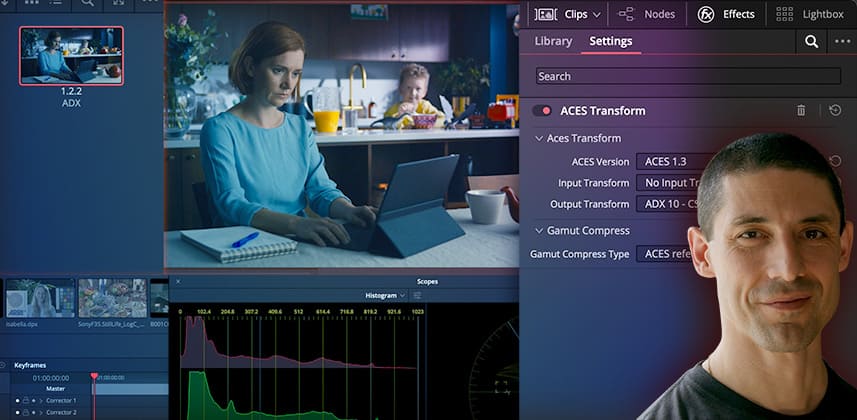| Series |
|---|
Working with greater accuracy while using Resolve’s default Film LUTs
As a colorist, film enthusiast, and color scientist, I’ve spent a LOT of time thinking up better ways to model the behavior of film in a dynamic and scene-referred way. I’ve come up with some great solutions, but sometimes all this head-scratching complexity isn’t necessary — what if we just want to use the Resolve’s native Film Looks LUTs to get a nice SDR reproduction of our camera log material?
The conventional wisdom is that it’s as simple as transforming our source into Rec709/Cineon, and then applying the LUT.
Moving beyond the Cineon
And while this works, it’s not ideal, and there’s actually a better way to get our image into the approximate color space of a film negative. This can be accomplished with the ACES ADX standard, which was devised to provide a method of color managing scanned film, as well as preparing an ACES grade for a film-out.
Learning goals for this Insight
By the end of this Insight you should understand:
- Why transforming into Rec709 prior to your LUT may be a significant compromise for your image
- What is the actual color space expected by the Resolve Film Looks LUTs and other legacy film LUTs?
- The history and intended use of the ACES ADX standard
Related Mixing Light Insights
- Fight Path: What is ACES and how do you use it? – In this Flight Path, you learn what ACES is and how the post-production pipeline is executed. ACES-related acronyms are broken down and you learn how to set up ACES on several different, common software platforms.
- Grading with Resolve’s default film LUTs – Insight Library search results for color grading with Resolve’s default Film LUTs
Member Content
Sorry... the rest of this content is for members only. You'll need to login or Join Now to continue (we hope you do!).
Need more information about our memberships? Click to learn more.
Membership optionsMember Login


